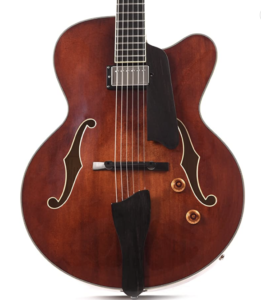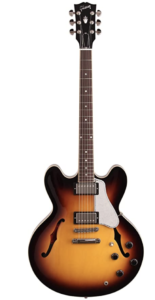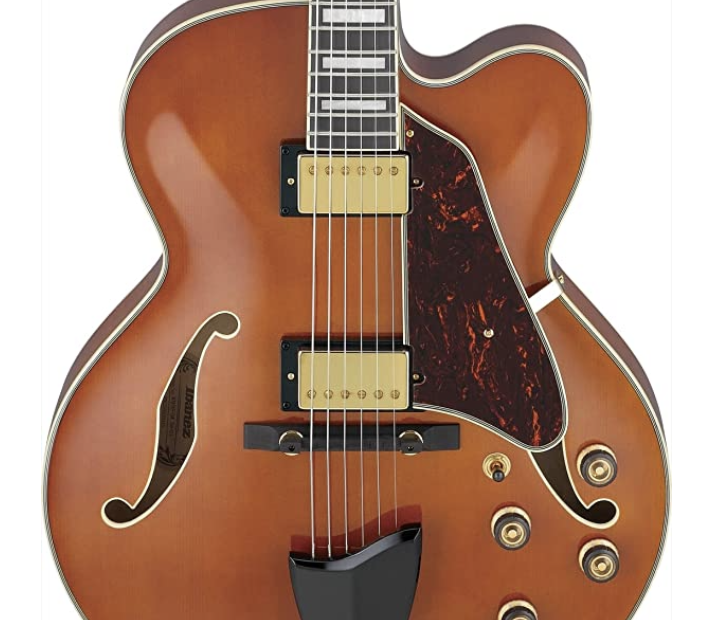 Playing the melodic minor scale on guitar, give us a versatile and unique scale that can be used in a variety of musical settings. These include jazz, rock, and classical music. While it may seem daunting at first, learning to play the melodic minor scale on guitar can greatly expand your musical vocabulary and give you new tools for improvisation and composition.
Playing the melodic minor scale on guitar, give us a versatile and unique scale that can be used in a variety of musical settings. These include jazz, rock, and classical music. While it may seem daunting at first, learning to play the melodic minor scale on guitar can greatly expand your musical vocabulary and give you new tools for improvisation and composition.
In this article, we’ll explore the basics of the melodic minor scale, how to play it on guitar, and some practical tips for incorporating it into your playing.
What is the Melodic Minor Scale?
The melodic minor scale is a variation of the natural minor scale, also known as the Aeolian mode. While the natural minor scale has a flat third, sixth, and seventh, the melodic minor scale raises the sixth and seventh notes by one half-step when ascending, but returns to the natural minor scale when descending.
Here is the formula for the A melodic minor scale:
A, B, C, D, E, F#, G#, A
or
Root, 2nd, flat 3rd, 4th, 5th, 6th, 7th, Root
As you can see, the sixth and seventh notes are raised by one half-step when ascending the scale, resulting in a unique sound that can be used to add tension and color to your playing.
See Also:
Soloing Over Chords on a Minor Pentatonic Scale
7 Tips to Improve Your Pentatonic Scale Skills
Beginner Guitar Scales: 3 Ways to Play Like a Pro
The G Major Scale on Guitar : What You Need to Know
How to Play the Melodic Minor Scale on Guitar
 Now that we understand the basics of the melodic minor scale, let’s take a look at how to play it on guitar. We’ll start with the A melodic minor scale, which can be played in several positions on the fretboard.
Now that we understand the basics of the melodic minor scale, let’s take a look at how to play it on guitar. We’ll start with the A melodic minor scale, which can be played in several positions on the fretboard.
First Position:
e|------------------5-6-9-|----------------------------|
B|-----------------5-----|----------------------------|
G|---------------6-------|-------------------------6--|
D|-------------7---------|-------------------6-7-9-----|
A|-------5-7-8-----------|-------------7-8-----------|
E|--5-6-9----------------|---5-7-9-10-7---------------|
Second Position:
e|-----------------12-13-15-|----------------------------|
B|-----------------12-------|----------------------------|
G|-------------12-14--------|------------------------14-|
D|-------12-14--------------|--------------12-14-15------|
A|--12-15-------------------|-------12-14----------------|
E|--------------------------|--12-13-15-------------------|
Third Position:
e|-----------------17-18-21-|----------------------------|
B|-----------------17-------|----------------------------|
G|-------------18-19--------|------------------------19-|
D|-------17-19--------------|--------------17-19-21------|
A|--17-19-------------------|-------17-18----------------|
E|--------------------------|--17-18-21-------------------|
As you can see, the melodic minor scale can be played in different positions on the fretboard. This allows you to play the scale in different octaves and on different strings, giving you more options for improvisation and composition.
Tips for Incorporating the Melodic Minor Scale into Your Playing
Now that you know how to play the melodic minor scale on guitar, here are some practical tips for incorporating it into your playing:
Experiment with different rhythms and phrasing: The melodic minor scale can be used in a variety of musical contexts, so it’s important to experiment with different rhythms and phrasing to find what works best for you.
Use the scale to add tension and color: The raised sixth and seventh notes of the melodic minor scale can be used to add tension and color to your playing. Try playing the scale over different
Now that we’ve covered the basic pattern of the melodic minor scale, let’s explore some different ways to use this scale in your playing. One way to add some flavor to your solos is to use the melodic minor scale to play over dominant 7th chords.
Jazz Playing
 In jazz and other genres, dominant 7th chords often serve as the V chord in a ii-V-I progression. For example, in the key of C, the V chord would be G7. To add some tension and color to your solos over the G7 chord, try using the G melodic minor scale.
In jazz and other genres, dominant 7th chords often serve as the V chord in a ii-V-I progression. For example, in the key of C, the V chord would be G7. To add some tension and color to your solos over the G7 chord, try using the G melodic minor scale.
Another way to use the melodic minor scale is to play it over minor ii-V-i progressions. In a minor ii-V-i, the ii chord is a half-diminished chord, the V chord is a dominant 7th chord, and the i chord is a minor 7th chord.
For example, in the key of C minor, the ii chord would be Dø7, the V chord would be G7, and the i chord would be Cm7. To add some interest to your solos over this progression, try using the D melodic minor scale over the Dø7 chord, the G melodic minor scale over the G7 chord, and the C melodic minor scale over the Cm7 chord.
Altered Dominant Chords
The melodic minor scale can also be used to play over altered dominant 7th chords. Altered dominant 7th chords contain altered notes, such as b9, #9, b5, or #5. To add some tension and color to your solos over altered dominant chords, try using the melodic minor scale a half-step above the root of the chord.
For example, to play over a G7#5 chord, try using the Ab melodic minor scale. To play over a G7b9 chord, try using the Ab melodic minor scale again.
Tension Notes
 In addition to these applications, the melodic minor scale can also be used to add tension and color to your solos over other chord types, such as minor 6th chords, minor-major 7th chords, and augmented chords.
In addition to these applications, the melodic minor scale can also be used to add tension and color to your solos over other chord types, such as minor 6th chords, minor-major 7th chords, and augmented chords.
Overall, the melodic minor scale is a versatile and important scale for guitar players to know and use. By practicing this scale and experimenting with different applications, you can add a whole new dimension to your playing and create more interesting and colorful solos.
Other Scales
There are several scales that are commonly used by guitar players, including:
- Major scale: The major scale is a seven-note scale that is widely used in Western music. It is a versatile scale that can be used in a variety of genres, from pop to jazz to rock.
- Natural Minor scale: The natural minor scale is a seven-note scale that is often used in classical and metal music. It has a slightly different pattern than the major scale, with a lowered third, sixth, and seventh note.
- Pentatonic scale: The pentatonic scale is a five-note scale that is used extensively in blues and rock music. It is a simple scale that is easy to learn and can be played in many different keys.
- Blues scale: The blues scale is a variation of the pentatonic scale that adds an additional note, the “blue note,” which is a lowered fifth. It is used primarily in blues music.
- Harmonic Minor scale: The harmonic minor scale is a seven-note scale that is often used in classical and jazz music. It has a unique pattern that includes a raised seventh note, which gives it a distinct sound.
- Dorian mode: The Dorian mode is a seven-note scale that is often used in jazz, rock, and funk music. It has a unique pattern that includes a raised sixth note, which gives it a distinct sound.
- Mixolydian mode: The Mixolydian mode is a seven-note scale that is often used in blues, rock, and funk music. It has a unique pattern that includes a lowered seventh note, which gives it a distinct sound.
Conclusion
In conclusion, mastering the melodic minor scale on guitar is an important step towards becoming a versatile and creative player. With its unique interval pattern and its ability to add tension and color to your solos, the melodic minor scale is an essential tool for any guitarist. So practice hard, experiment with different applications, and have fun exploring the sounds and possibilities of this versatile scale.
